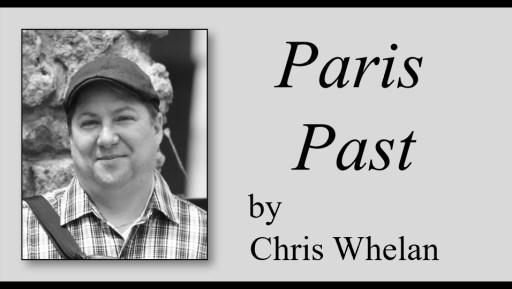
5 minute read
Downtown Paris Revitalization Proposed in 1977
Downtown Paris Revitalization Proposed in 1977

At the beginning of 1977, a study of downtown Paris, Ontario was done to determine the future of the area. MacNaughton Planning Consultants Ltd of Kitchener and J. D. Lee Engineering Ltd. prepared a report based on community input and engineering studies on alternative solutions for downtown revitalization. The proposals were to be presented at a public meeting Although the town council would make the final decision on any redevelopment plan for the downtown area, Mayor Jack Bawcutt had emphasized that the decision would be based on the wants and needs of the community. In January 1977 around 150 people attended a public meeting to hear reports on the challenges facing downtown Paris. Former Mayor M.H. Sharpe, a member of a committee formed by Mayor Jack Bawcutt to study downtown revitalization, released details of a proposal that was originally made by the committee to town council back in November 1975, recommending that a shopping and residential complex be developed on the periphery of the existing downtown area, above the maximum flood lines established
by the Grand River Conservation Authority. The proposed building would have central services, including parking, and offer facilities for the public utilities commission, municipal office, retail outlets, recreation, a theatre, banks, offices, and apartment units, as well as a senior citizens complex The committee believed that this would leave a large area of unused land (currently occupied by existing commercial buildings) to be landscaped in an attractive manner, making downtown Paris a unique and beautiful spot in the province of Ontario. Mayor Bawcutt said that any acquisition of land or relocating businesses or people would be done "on an equitable basis." The mayor indicated that the Ontario Downtown Revitalization Program under the ministry of housing's community renewal branch would be considered as a source of funding for the project The plan provides two-thirds of the financing for several types of revitalization
projects, with the town paying onethird. The province obtains its money back through increased assessment from the business area.
MacNaughton Planning had prepared questionnaires to gather background information to be used in the preparation of various proposals. The forms were available at the municipal office and were returned as quickly as possible. The responses to the questionnaire showed a strong opposition to the idea of massive redevelopment which would involve substantial clearing of structures and the construction of a large downtown shopping complex This was in keeping with the overall feeling that Paris has a downtown worth preserving and enhancing; it was decided that a big commercial block would do more damage to the character of the town than it would be worth
Continued on page 15
Revitalization of Downtown Under Way in 1980
creating no parking zones on both sides of Willow Street from Old Bridge Street to William Street and on both sides of William Street from Willow to Grand River Street North. The ban was expected to be in effect until the repairs to the high-level traffic bridge and the Nith River bridge were completed. Work on the two bridges was expected to continue through the summer months A town spokesman said the parking ban is being initiated because of increased traffic on both streets which were used as a detour route. The two streets are designated as county roads and require Brant County council approval for changes in parking regulations.
The revitalization of downtown Paris is under way. Work on the first of two areas to get a facelifting in 1980 began with the removal of the old sidewalk on the south side of William Street from Grand River Street North to Broadway Street. It was replaced with a four-foot-wide concrete walk and a five-foot path of paving bricks which will widen the walkway by about two feet. Also included in the work are new street lighting, trees, and benches, Brant County council is expected to pass a bylaw Wednesday

The Paris Business Improvement Association initially intended to do only the cenotaph area at the south end of Grand River Street North that year. The William Street portion was added when the association learned that the town was faced with tearing up the sidewalk to make repairs. Rather than wait until the next year, the association decided to go ahead that year. The decision turned out to be a break for the municipality which was expected to save about $2000 by sharing the work with the association. The town faced removing the sidewalk at its own expense to make repairs after rainwater seeped under it undermining it in several areas. The washed-out sections were repaired Later that year the cenotaph area was reworked to tie in with the over-all scheme for the downtown. New walkways were developed around the memorial with the addition of new shrubs trees, lighting, and rest areas. Changes were also made to parking in the area. The remainder of the downtown section was reworked the following year
The total project was expected to cost about $218,000 with $150,000 being provided as a low-interest loan from the ministry of housing. Town council contributed about $68,000. Downtown merchants would repay the ministry loan through the Business Improvement Association.










